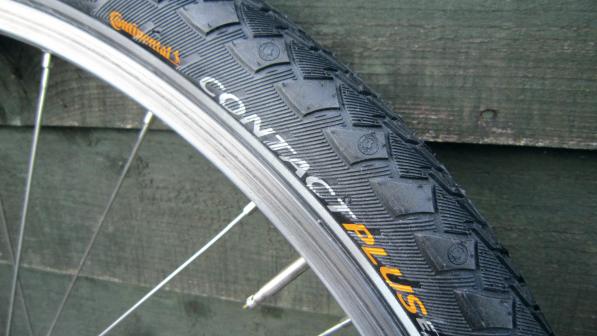Foldable tyres

Anthony Beggs
Foldable tyres cost more, weigh less, and sometimes have some other, less immediately obvious higher performance features than their rigid, steel-beaded counterparts, such as a finer weave casing. And obviously they fold, which makes it easier to pack a spare on tour – not that I’d necessarily advise that. As the bead is less rigid, stiffened by Kevlar rather than steel wire, it has to be a smaller diameter not to stretch too big when inflated, and this can make foldable tyres more difficult to fit in the first place. A Var-425 tyre lever is helpful.
Cracks don’t really matter in the outer rubber of a modern tyre, since the threads are man-made fibres and do not rot. If a tyre isn’t puncturing or distorting, there’s no need to replace it yet. The more of that high hysteresis tread rubber wears off, the easier it rolls in fact. So apart from their increasing susceptibility to punctures, worn tyres are great! The one place to beware of exposed casing threads is at the edge of the rim, which can quickly chafe through an unprotected sidewall.
Chris Juden
This was first published in the October / November 2014 edition of Cycling UK's Cycle magazine.
